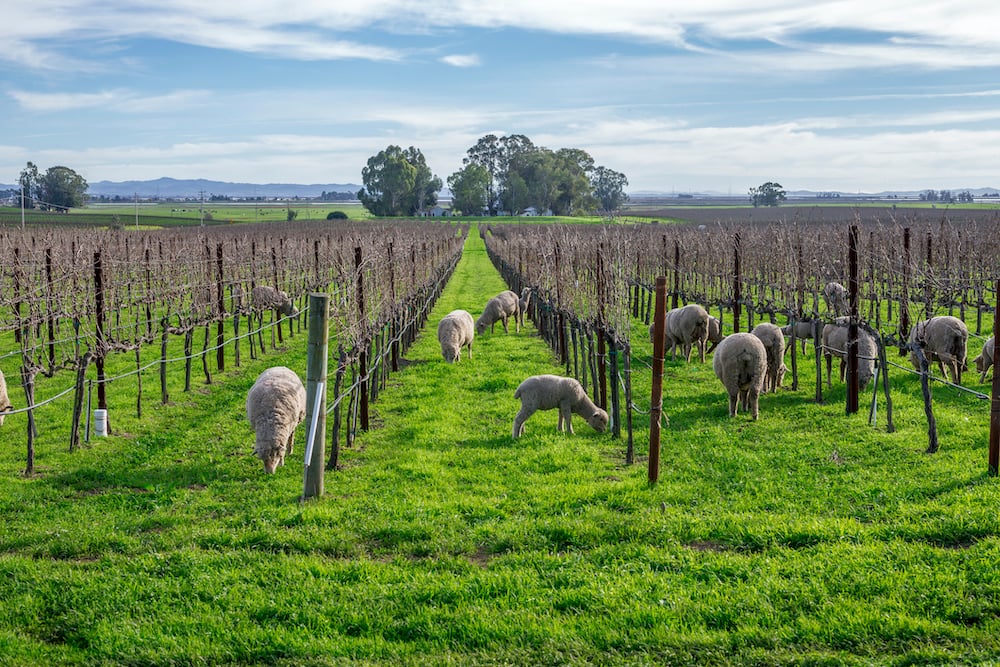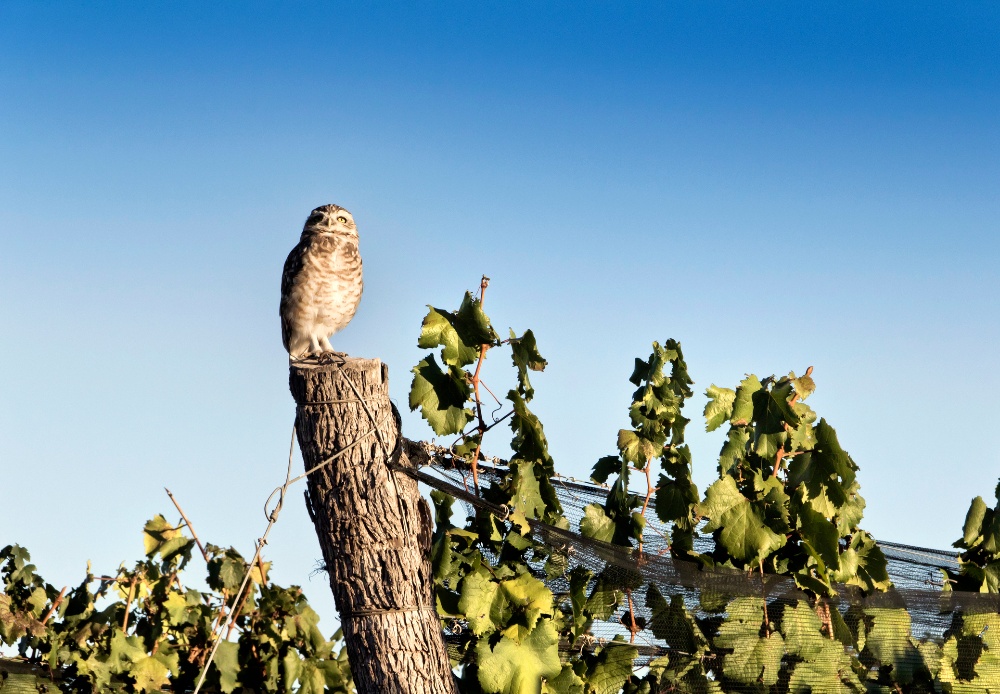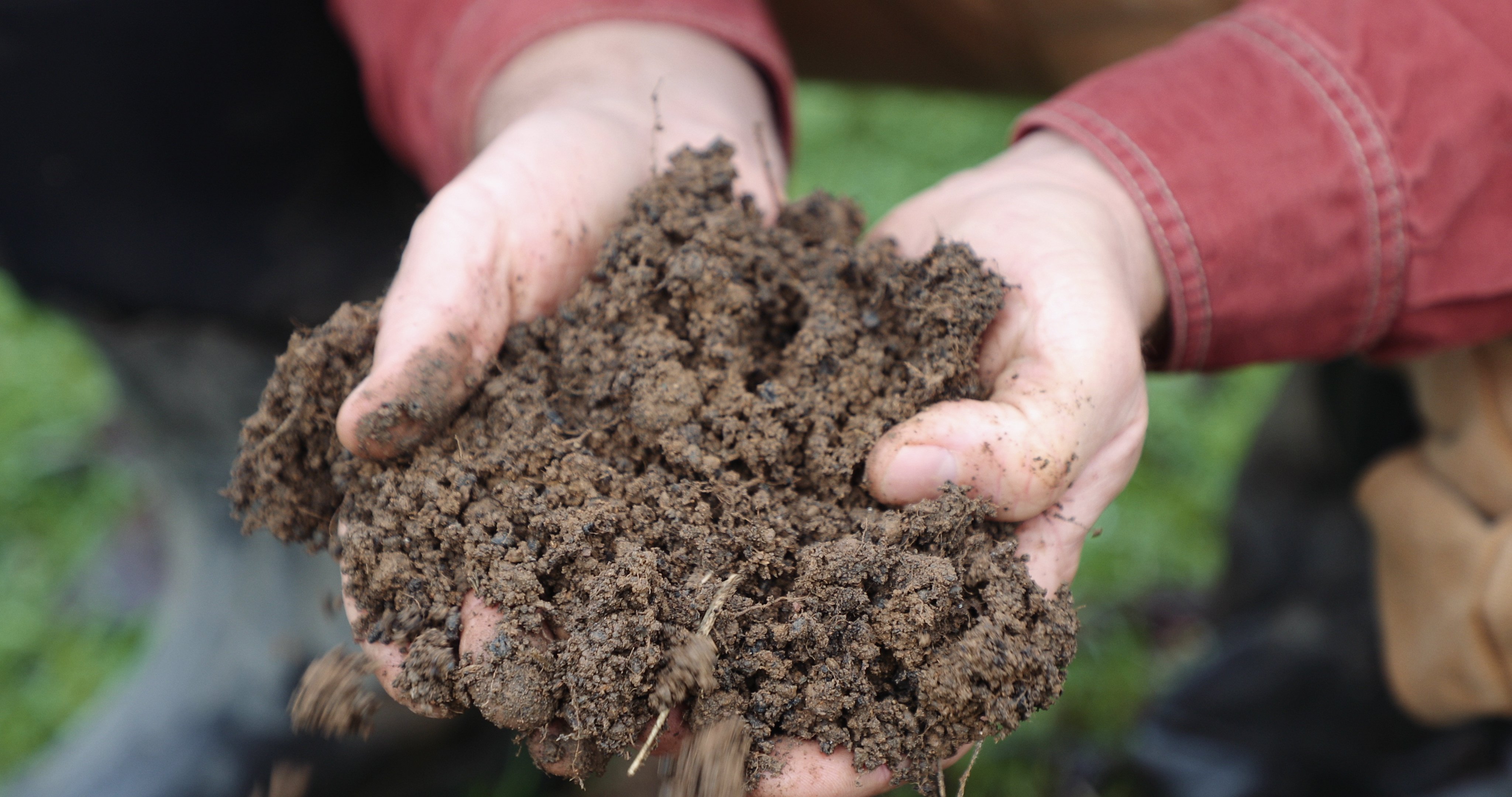According to the California Sustainable Winegrowing Alliance, an incredible 92% of California wine is made in sustainable wineries—accounting for more than 397 million cases of wine.
To earn those credentials, vineyards and wineries implement sustainability practices ranging from water and energy conservation to soil health improvements and habitat restoration. In many of these efforts, human land managers have non-human help—and it doesn't always take the form of automation or machines.
Often invisible to the casual winery visitor, biological sustainability measures can lessen the need for labor, fossil fuels, and chemical inputs. We'll take a tour of vineyards' animal assistants, starting with the biggest.
Four-legged mowers
Rather than mowing between vines or using herbicides, some vineyards turn to goats or sheep that simultaneously manufacture and spread fertilizer. Natural grazing also aids in fuel suppression—increasingly important in fire-prone wine country—and removes hard-to-reach weeds that compete with vines for water and nutrients.
“Grazing sheep keeps the grass and cover crops short, which reduces frost and fire danger," says Brian Birt, Ranch Manager of Cline Cellars. "Using the sheep to remove leaves from the fruit zone improves air circulation, prevents fungus, and saves the vineyard hundreds of dollars an acre."

You won't find them in the vineyard rows, but cows play an indirect role in Cline Cellars' sustainability efforts, too. “We cook liquid and dry manure from local dairies, then add in woodchips to make a ‘compost tea’ that is applied through the drip irrigation system," Birt says. Cooking liquefies and breaks down the natural compounds, accelerating the conversion of the "ingredients" into elements usable by the crop.
“Whey, the liquid waste left from cheesemaking, is injected into the drip system. We have found the high pH and acidic nature of whey from Holsteins is effective as weed control. The whey from goat dairies is used as fertilizer."
The birds and the bees
While birds that feed on grapes can be a nuisance, trained falcons help drive them away. Meanwhile, species that eat insects rather than grapes provide a form of biological pest control—for example, by reducing the population of blue-green sharpshooters, which transmit the bacterium that cause Pierce's disease.
One study on a Napa vineyard found that vineyards can attract songbirds by adding nest boxes: especially important where trees that otherwise might have housed helpful species have been cleared. Another approach is to use chickens, which in addition to helping control insects also gobble up small reptiles and rodents. Owls and kestrels can make a dent in rodent populations, too, with a typical barn owl consuming up to 1,000 mice and voles each year.

Other vineyard workers on the wing: bees, while not needed for vine pollination, are attracted to and pollinate flowering cover crops.
“Broadly speaking, bees bring enhanced fertility and quality to a wide variety of crops, including those that self-pollinate,” says Joseph Brinkley, Director of Vineyards at Bonterra Organic Vineyards. “The bees’ presence ensures we have a healthy and diverse cover crop, which in turn leads to a richly complex microbiome around the vines’ roots.”
Bonterra is proactive about protecting bee-friendly plants adjacent to the vineyards, planting "habitat corridors" with shrubs, fruit trees, and native species. “These insectaries attract and harbor beneficial insects that keep unwanted pests away," Brinkley says, "allowing us to naturally manage insect pressure in our vineyards."
Invisible, but essential
Now for the animal life underfoot. Microorganisms are essential to maintaining nutrient-rich soil that retains moisture and supports quality vines. To foster this type of biodiversity, land managers use a variety of methods to ensure the ground itself is a healthy habitat.
Cover crops planted between vineyard rows can help address a range of soil health issues and reduce the need for herbicides. Leguminous cover crops add nitrogen to soils that need it, while grasses mitigate excess nitrogen. Tuberous cover crops and those with long roots—like wild radish—break up compacted soil.

(Photo courtesy Bonterra Organic Vineyards)
Both Cline Cellars and Bonterra Organic Vineyards compost and reuse organic waste such as grape stems, skins, vine trimmings, and chipped material. The slow release of nutrients fuels the microbial activity of soil organisms and aids in erosion control.
In addition to their own waste products, some vineyards source other local inputs to boost soil health. “We take advantage of readily available products like fish emulsion to add a wide variety of nutrients to the soil, and we add calcium with local oyster shells,” Birt says.
If it all seems like an extraordinary effort to make in the name of certifiable sustainability, it's worth noting these aren't one-sided benefits. "Sustainable vineyard and winery practices improve the economic vitality of vineyards and wineries,” says Allison Jordan of the California Sustainable Winegrowing Alliance. What's good for vineyard animal life—seen and unseen—is good for growers, too.
